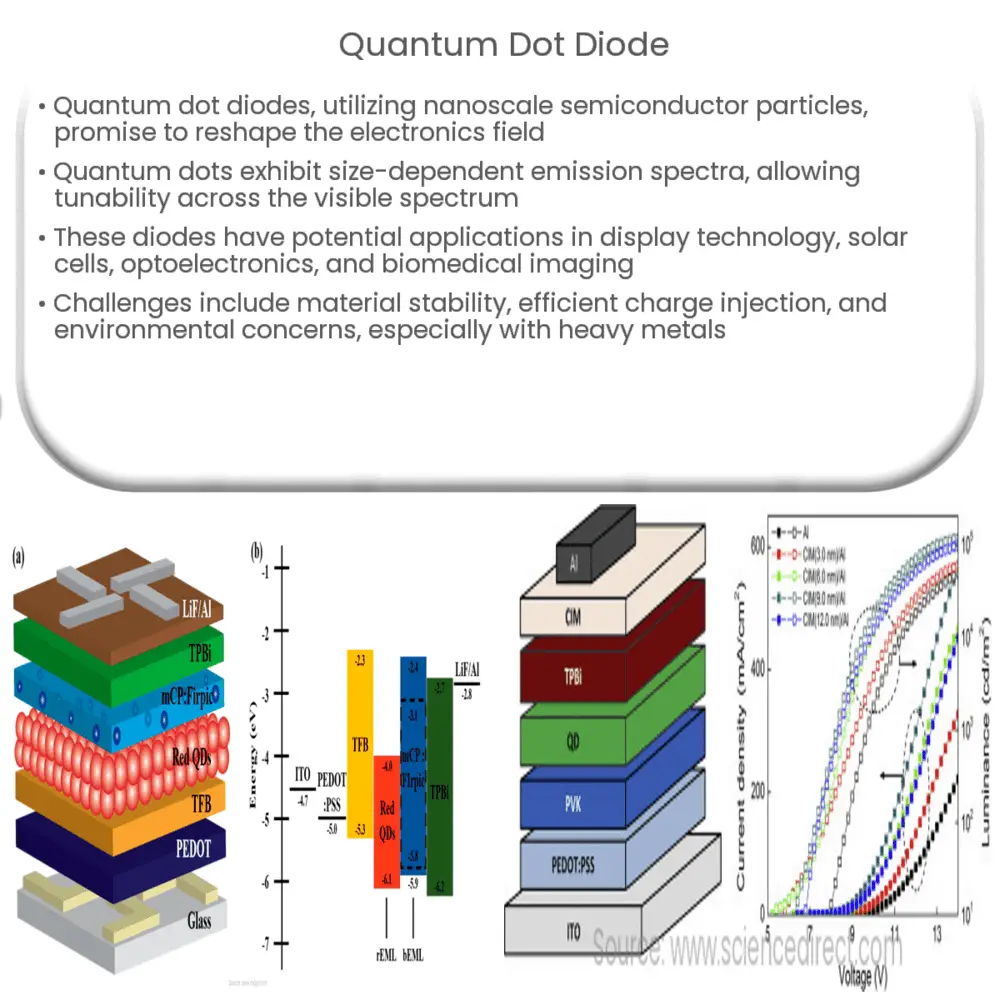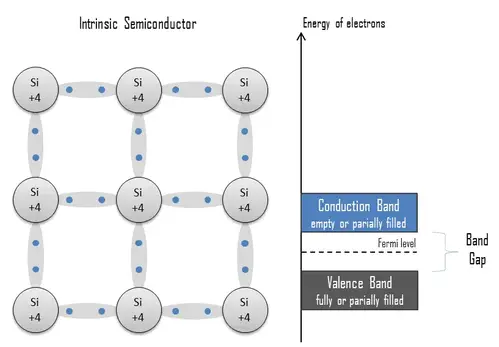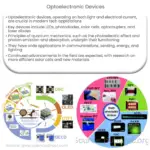Quantum dot diodes utilize nanoscale semiconductor particles to enable tunable, efficient electronic and optoelectronic applications.

Quantum Dot Diodes: Revolutionizing the Future of Electronics
Introduction to Quantum Dot Diodes
Quantum dot diodes are a cutting-edge technology that has the potential to revolutionize the field of electronics. These novel devices take advantage of the unique properties of quantum dots, which are nanoscale semiconductor particles with exceptional optical and electronic properties. In this article, we will explore the basics of quantum dot diodes, their potential applications, and the challenges that need to be overcome to bring this technology to the mainstream.
What are Quantum Dots?
Quantum dots (QDs) are semiconductor nanocrystals with dimensions typically ranging from 2 to 10 nanometers. Due to their small size, they exhibit quantum confinement effects, which result in distinct and controllable electronic and optical properties. QDs can be synthesized from a variety of materials, such as cadmium selenide (CdSe), cadmium telluride (CdTe), and indium phosphide (InP), among others.
One of the most remarkable features of quantum dots is their size-dependent emission spectra. By adjusting the size of the QDs, it is possible to tune their emission color across the entire visible spectrum and even into the infrared region. This tunability makes QDs highly desirable for a wide range of applications, including solar cells, sensors, and light-emitting devices.
How Do Quantum Dot Diodes Work?
A quantum dot diode is a type of semiconductor device that utilizes quantum dots as the active region for charge transport and light emission. It consists of a sandwich-like structure with a layer of QDs placed between two layers of different semiconductor materials (the p-type and n-type layers). When a voltage is applied across the diode, electrons and holes (positive charge carriers) are injected into the quantum dot layer from the n-type and p-type layers, respectively.
Due to the quantum confinement effects within the QDs, the electrons and holes are forced to occupy discrete energy levels. When an electron in a higher energy state recombines with a hole in a lower energy state, a photon is emitted. The energy and thus the wavelength of the emitted photon are determined by the size of the QDs and the difference in energy levels. By controlling the size and composition of the quantum dots, the emission wavelength of the quantum dot diode can be precisely tuned.
Applications of Quantum Dot Diodes
Quantum dot diodes have the potential to revolutionize various industries due to their unique properties. Some of the most promising applications include:
- Display Technology: Quantum dot diodes can be used to create highly efficient and color-accurate displays. They offer the possibility of producing thinner, lighter, and more energy-efficient screens with improved color gamut and brightness compared to traditional LED or OLED displays.
- Solar Cells: The tunable bandgap of quantum dots makes them ideal for use in multi-junction solar cells, which can potentially achieve higher power conversion efficiencies than current single-junction solar cells.
- Optoelectronics: Quantum dot diodes can be employed in the development of advanced optoelectronic devices such as lasers, photodetectors, and optical modulators, enabling faster and more energy-efficient data communication and processing.
- Biomedical Imaging: Due to their size-tunable emission spectra and low toxicity, quantum dots can be utilized as fluorescent probes for in vivo imaging, helping to advance medical diagnostics and therapeutic techniques.
Challenges in Quantum Dot Diode Development
While the potential applications of quantum dot diodes are exciting, several challenges must be addressed before this technology can be fully realized:
- Material Stability: Quantum dots can be sensitive to environmental factors such as oxygen and moisture, which can cause degradation and limit their performance. Developing stable and robust QDs is crucial for the successful implementation of quantum dot diodes in various applications.
- Efficient Charge Injection: Optimizing the charge injection process in quantum dot diodes is essential for achieving high efficiency and long device lifetimes. Researchers are investigating novel materials and device architectures to enhance charge injection and reduce nonradiative recombination losses.
- Environmental and Health Concerns: Some quantum dots, particularly those containing heavy metals such as cadmium, raise concerns about their potential environmental and health impacts. Developing eco-friendly quantum dots with minimal toxicity is an important consideration for the widespread adoption of this technology.
Conclusion
Quantum dot diodes have the potential to revolutionize various industries due to their unique properties and performance advantages. However, challenges in materials stability, charge injection, and environmental impact must be addressed before this promising technology can be fully realized. As researchers continue to make strides in overcoming these obstacles, we can expect quantum dot diodes to play an increasingly important role in shaping the future of electronics and optoelectronics, offering significant benefits for a wide range of applications.



